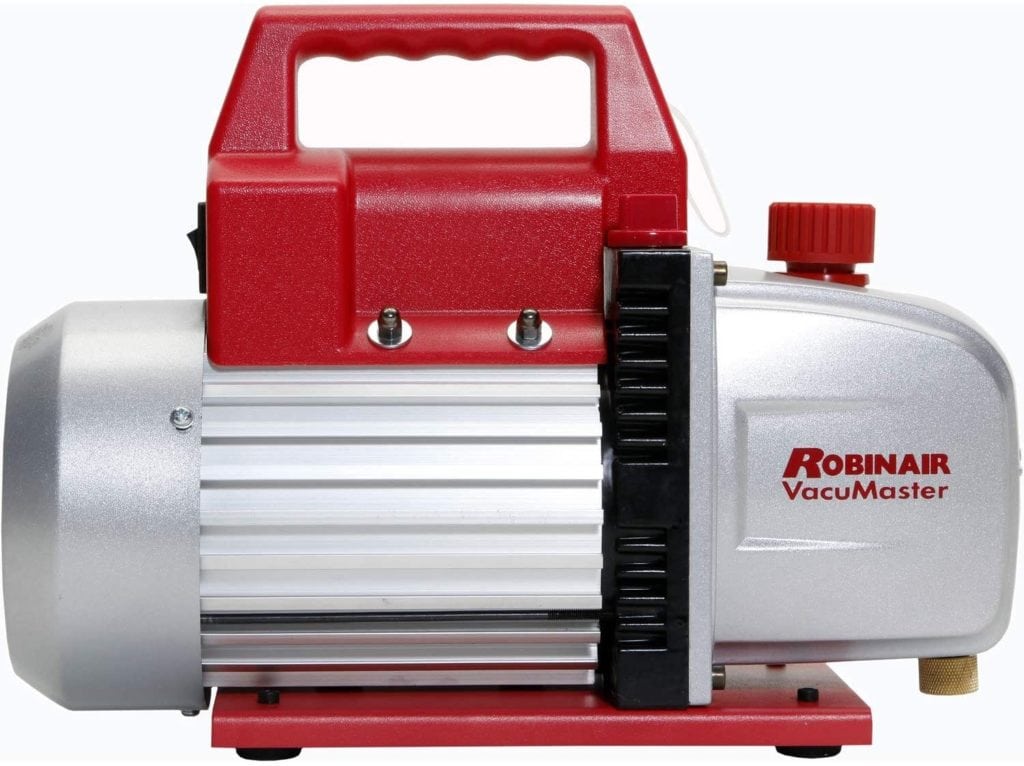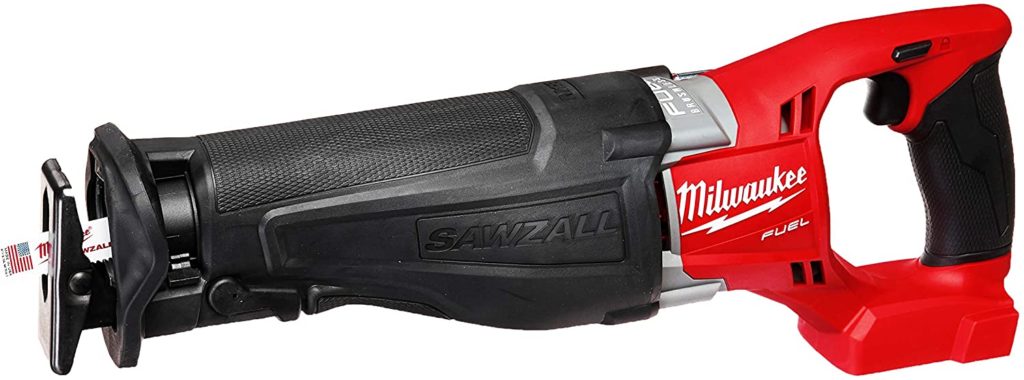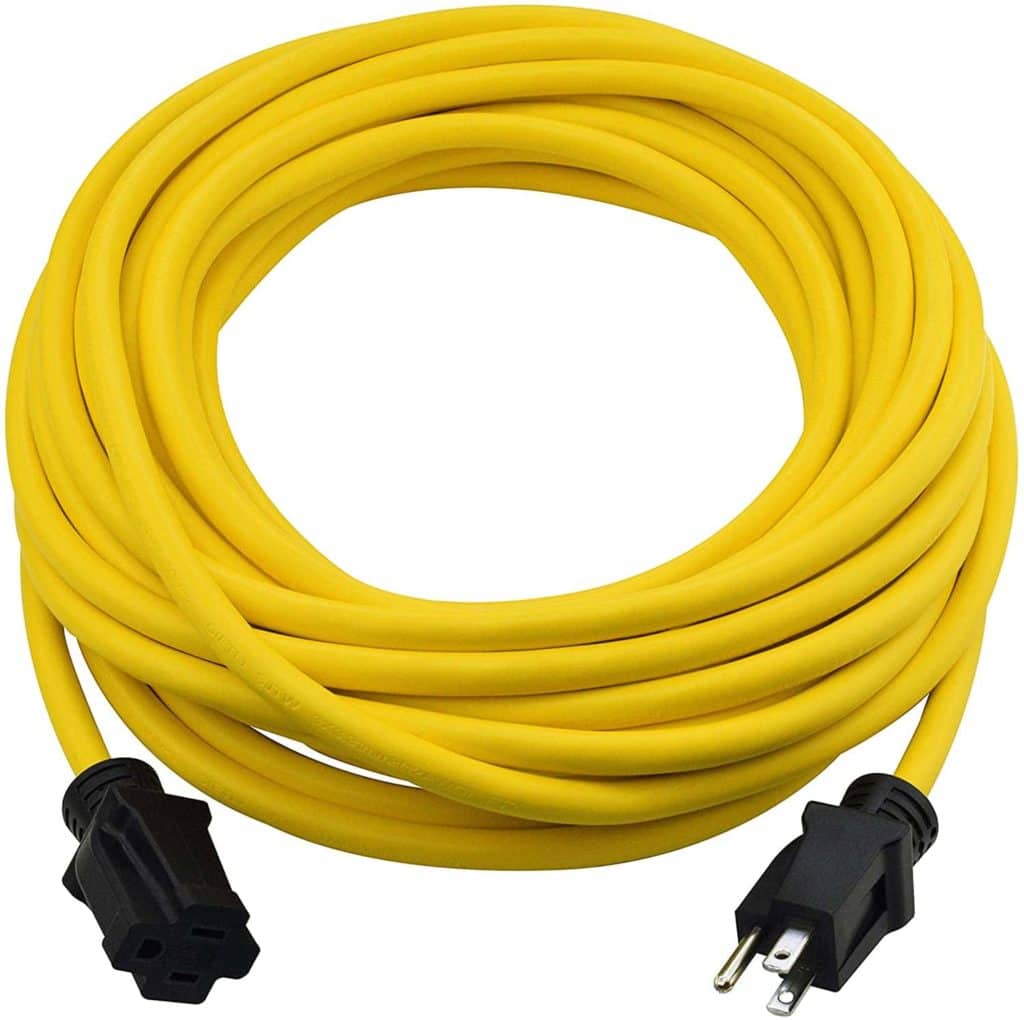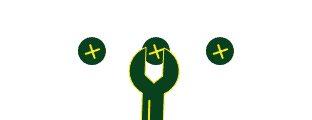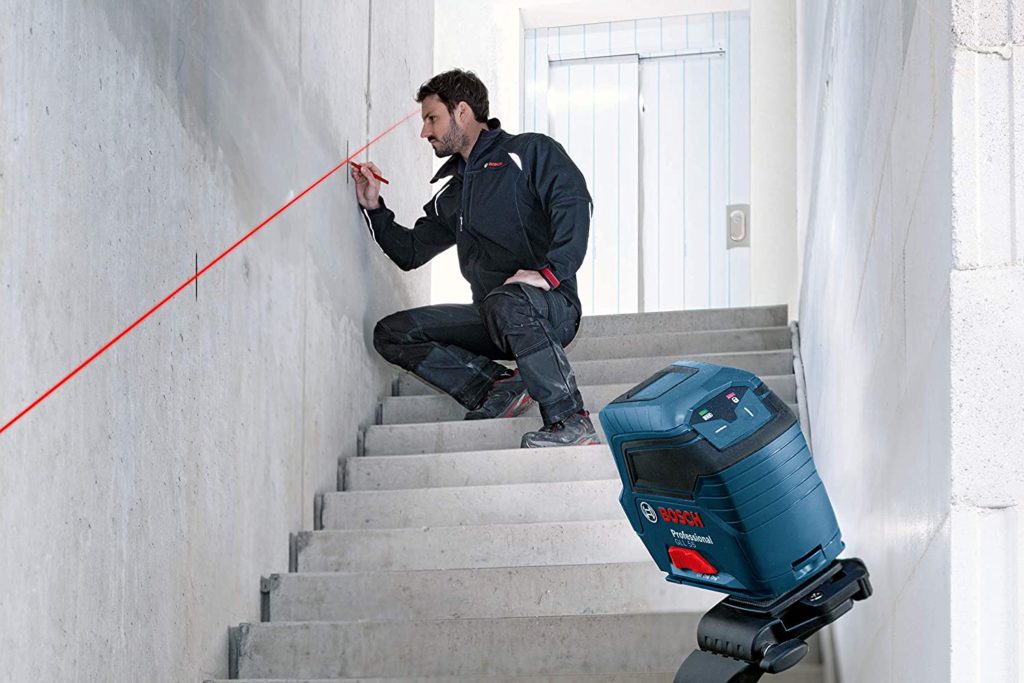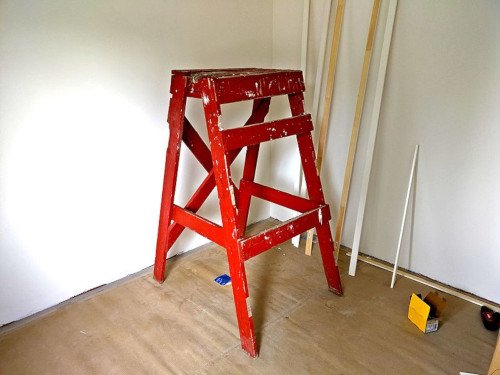31 Essential HVAC Tools List: Different Types & Their Uses
-
Pete Ortiz
- Last updated:
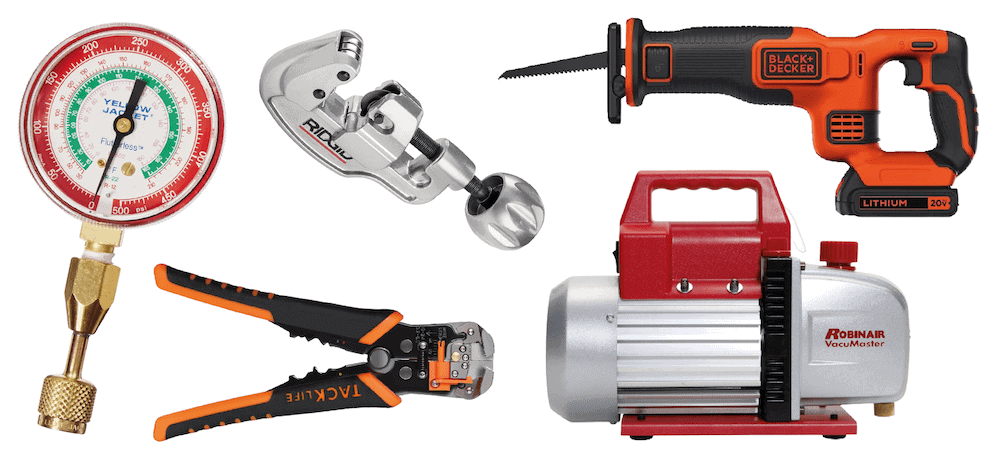
HVAC technicians use several tools to get the job done. Although many are used in other trades, some tools are specialized and designed only for heating and cooling projects. Whether you have been a technician for many years or are just starting, make sure you are prepared for any task by having the essential tools in your kit.
To help you out, we have created a comprehensive list of the 31 most important HVAC work tools. Let’s get to it.
Tools Specifically for HVAC
HVAC technicians need tools that other trades don’t require. They are designed for HVAC work, meaning you absolutely need these tools to be an HVAC technician.
1. Multimeter
Every HVAC professional needs a multimeter in their kit. This handy device will help you detect live currents in a wire, power switch, or outlet. This prevents you from getting electrocuted and helps you locate areas that need repairs.
2. Thermometer
Technicians need to check the temperature of HVAC units and use a thermometer to get an accurate reading. If the reading is too high, add refrigerant to the HVAC unit.
3. Vacuum Pump
Vacuum pumps are a must for HVAC technicians. You’ll use the pump to remove moisture from any system you are working on. You will need to use it more often than you would think.
4. HVAC Software
Not all HVAC tools must be held in your hand. You can invest in HVAC software to automate your business and improve your efficiency. The software can be used for online scheduling, dispatching, estimating, and invoicing. Even if you aren’t tech-savvy, HVAC software can help you improve your business.
Find a HVAC, AC and duct specialist in your area, and get free, no-commitment estimates for your project.Consult a HEATING & COOLING expert

Metal Bending Tools
HVAC technicians work with metal a lot. You need to have the proper metal bending tools to create seamless and attractive systems.
5. Hand Seamer (Tongs)
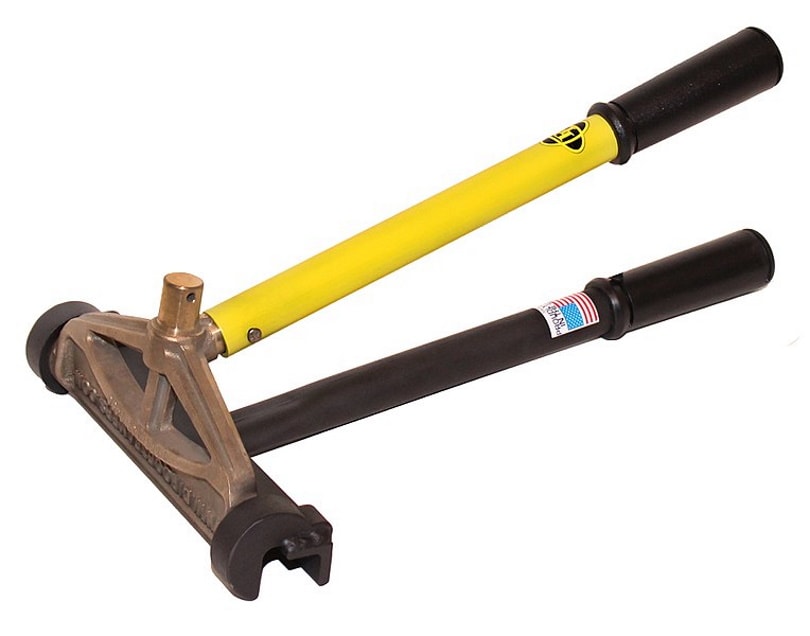
You’ll use a hand seamer to create clean and accurate bends in your HVAC systems. Though these tools look like a pair of pliers, they are used for bending sheet metal. You can easily tell a hand seamer from a plier because of the long flat edges they have on the head.
6. Folding Bar (Drive Bar)
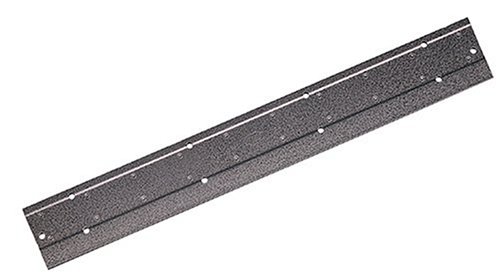
Gauges
Gauges help you measure the pressure levels of various gases. HVAC technicians use several gauges when making repairs and installing new systems.
7. Manifold Gauges
One of the most essential tools for an HVAC technician is a manifold gauge. It helps you find leaks in an airline. The manifold gauge is essential when removing refrigerant from an HVAC unit or charging air conditioner units.
8. Refrigeration Gauges

If you work in HVAC, you probably know that you will be dealing with many refrigerants. You can measure refrigerant levels using a refrigeration gauge. It comes with the manifold, but the hoses are sold separately.
9. Refrigeration Gauge Hoses
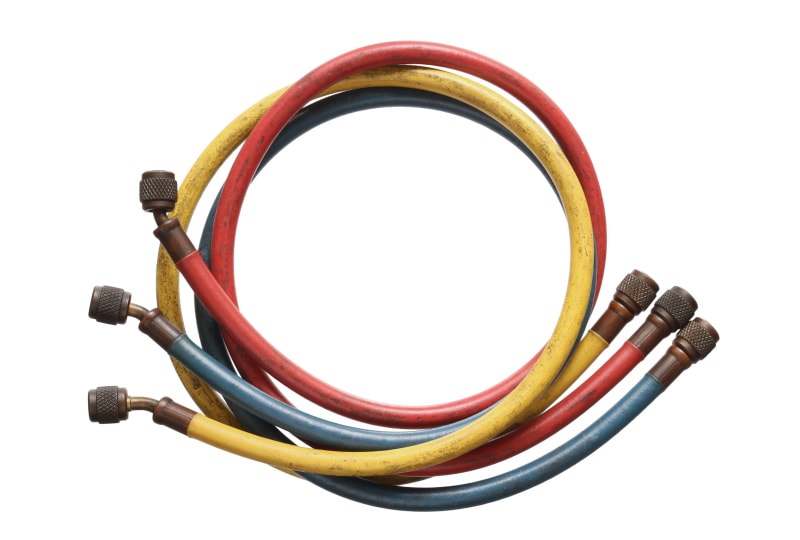
You can ensure that no refrigerant leaks outside of the unit by purchasing refrigeration gauge hoses with quick-release fittings and de minimis fittings. These fittings reduce the amount of refrigerant that may leak outside of the unit.
Cutting and Stripping Tools
Whenever you work on HVAC units, you must work with wires and rewire different systems. As a result, you need various cutting and stripping tools that can cut through different materials, such as metal sheets and wires.
10. Crimpers
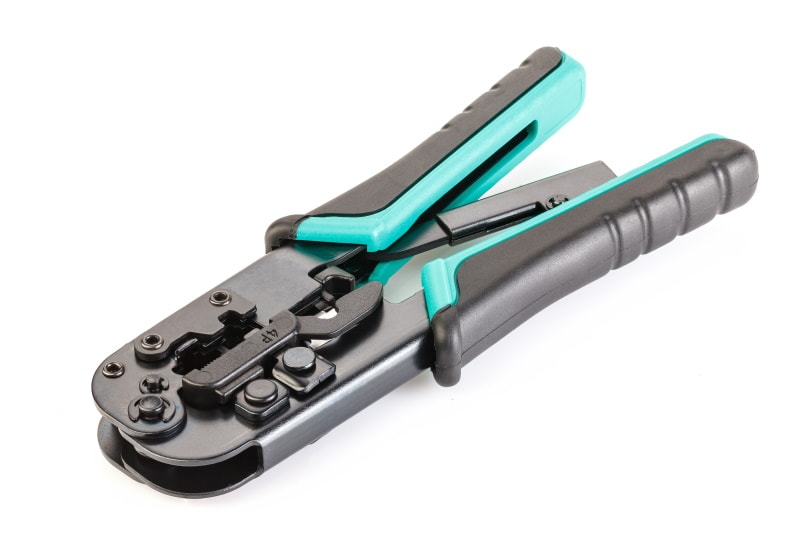
As an HVAC technician, you come in contact with several open pipes. You can use a crimper to close the open end of a rounded pipe. The teeth on the crimper allow the open end to be closed. You will then insert the newly closed end into the open end of a separate pipe to put them together.
11. Tubing Cutters
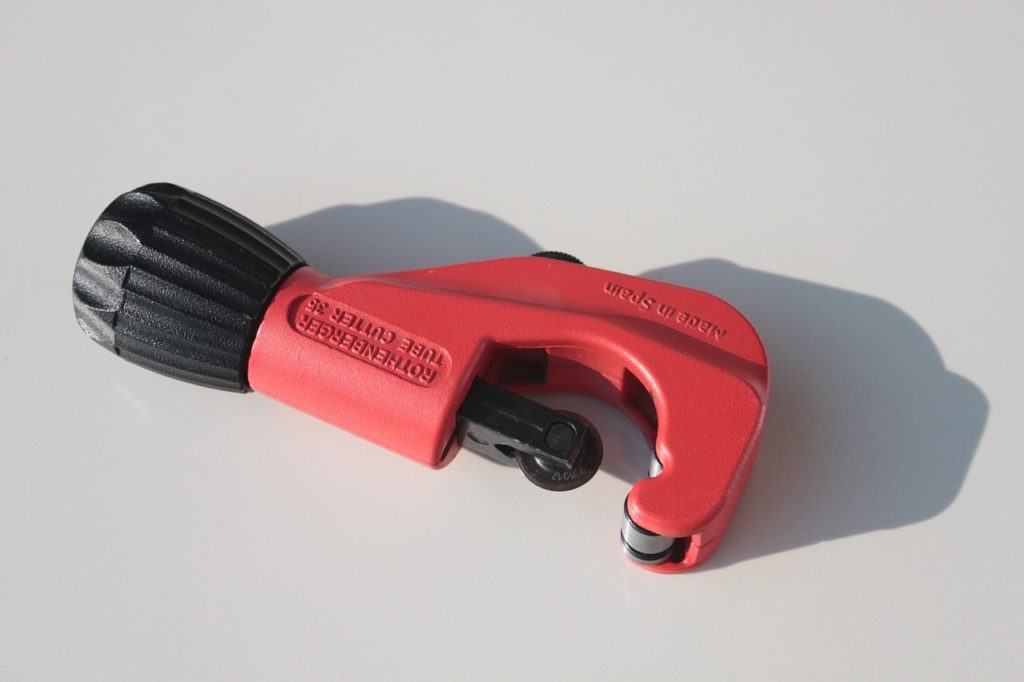
Air conditioning systems use copper tubing. Tubing cutters are specifically designed so you can cut the tubing efficiently. You use the tool by clamping a cutting wheel around the tube and spinning it until you cut it completely. You have to tighten the clamp as you rotate the tube.
12. Metal Shears
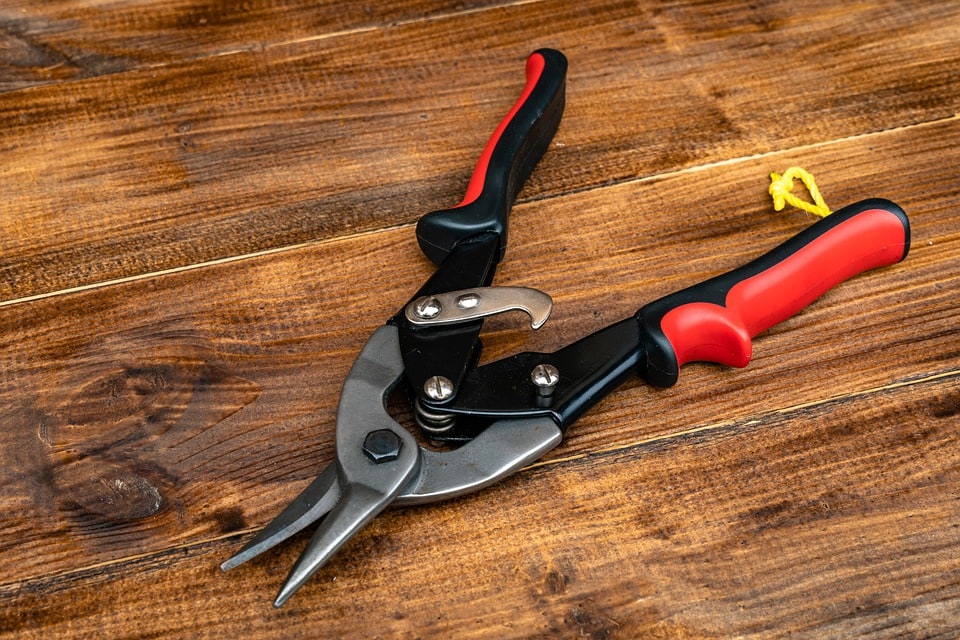
Shears are designed to cut long straight lines in sheet metal, and you’ll probably use them every day in your HVAC work.
13. Tin Snips
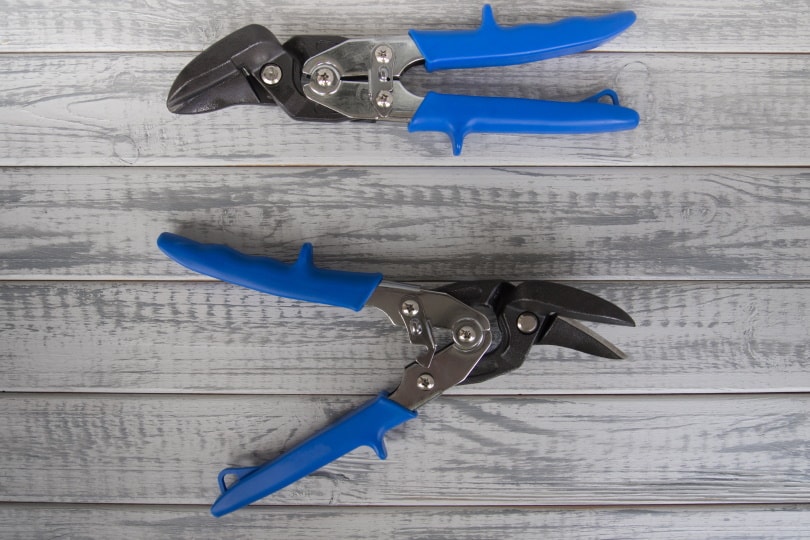
Sometimes, metal shears are too large for the cuts you want. You can use tin snips, which are extra-sharp scissors, for smaller cuts. HVAC units require three types of tin snips. Be sure to have all of the following snips in your kit:
- Lefts: Left snips cut to the left. This may be unnatural for many people, but it means you won’t have to lift the metal as much. Most left snips have red handles.
- Rights: In contrast to lefts, rights cut to the right. Most rights have green handles.
- Straights: Straights, as you probably figured, cut straight. They are sometimes called Bulldogs because they can cut multiple sheets of metal simultaneously. You can make cuts too short for metal shears. Most straights are orange, but not always.
14. Side Cutter Pliers
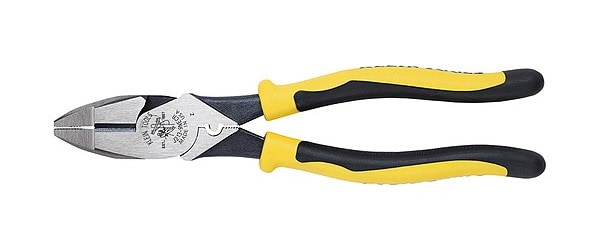
HVAC technicians need to cut wires frequently, and side cutter pliers are another essential tool for everyday tasks.
15. Wire Strippers
Whenever you rewire HVAC systems, you need to strip the wires. You need a reliable pair of wire strippers when rewiring a system.
Power Tools
Though HVAC technicians need fewer power tools than other workers, there are a few you should consider adding. They will make your work so much easier.
16. Cordless Drill

When running new wires, you need to drill tiny holes for them, and a cordless drill can accomplish the task quickly and effectively. We specifically recommend a cordless rather than a corded drill because you won’t have a cord to limit your movement. With a cordless drill and batteries, you are good to go anywhere.
17. Sawzall (Reciprocating Saw)
HVAC technicians have to cut through various materials every time they are on the job. You can use a Sawzall to save time, and although it’s more expensive than a hacksaw, you’ll complete jobs quicker with less strain on your arms.
18. Extension Cord (Heavy-duty)
If you have minimal experience as an HVAC technician, you know that one of the most annoying parts of the job is constantly working in places far away from an electrical outlet. You can invest in a heavy-duty extension cord so you always have access to power.
General Tools
There are tools that every worker needs, including HVAC technicians. Though you probably already have these tools in your garage, ensure you add them to your HVAC kit, too. They come in handy.
19. Level
Whenever you install an HVAC unit, you’ll need to use a high-quality level. An unlevel unit can damage equipment, injure employees, and damage your reputation.
20. Tape Measure
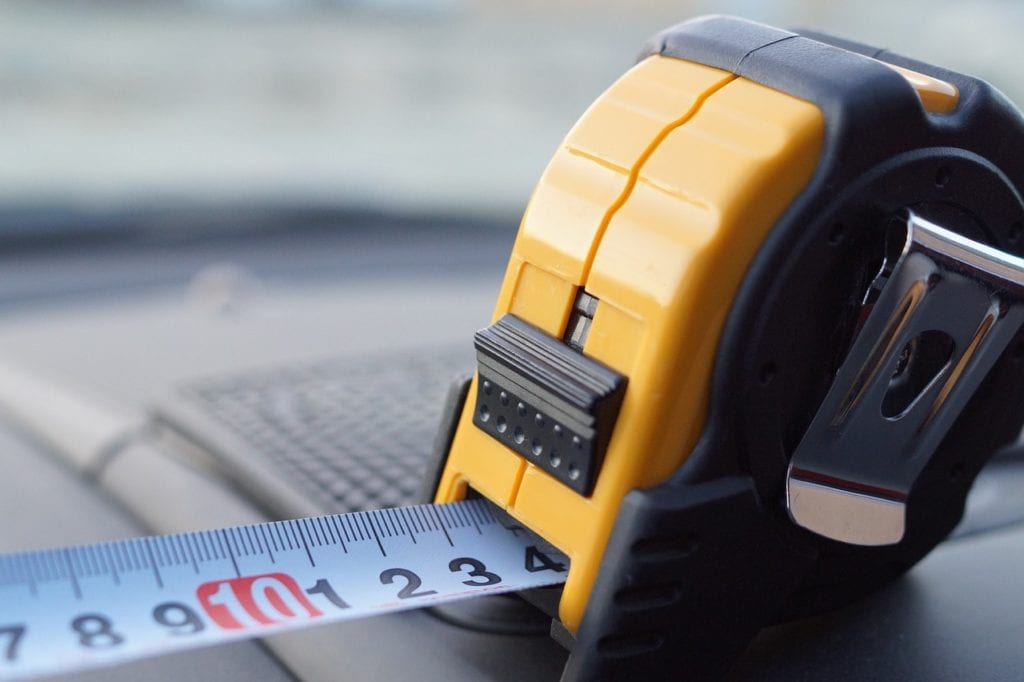
As an HVAC technician, you’ll frequently measure spaces for ductwork and other materials. It’s vital to always have a tape measure on hand. Your tape measure should be a minimum of 25 feet long but feel free to look for longer ones. You can never have too long of a tape measure, but some workers prefer the smaller ones that weigh less.
21. Needle-Nose Pliers
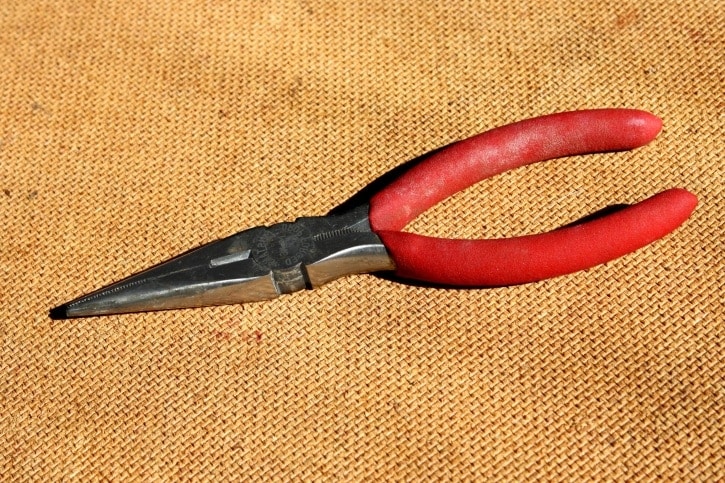
You’ll also need needle-nose pliers in your kit. They are handy when you need to reach through a wall or work on a thermostat. Their long noses give you maximal control that you can’t get with another tool.
22. Awl
Sometimes you need to mark on a metal surface or punch a hole into it, and you can use an awl to do so easily and effectively. Though the awl is small and unassuming, it is very useful.
23. Hammer
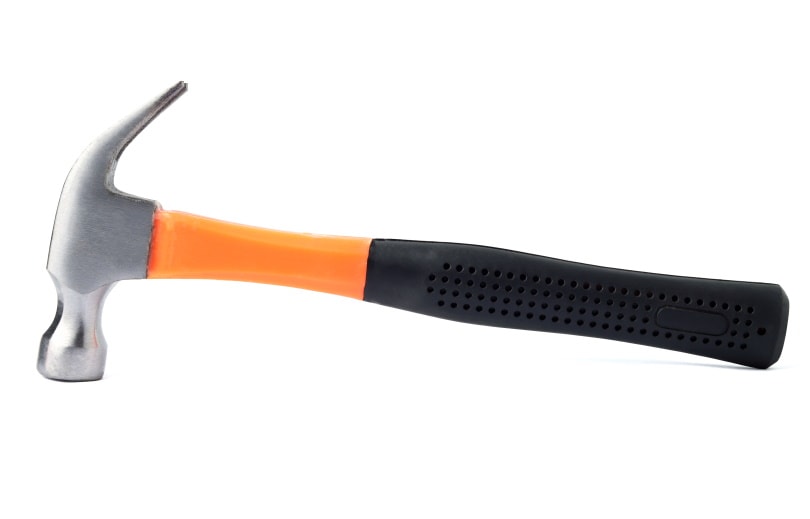
Everyone should have their own hammer, and that includes HVAC technicians. You’ll need one to remove nails and move materials into place.
24. Screwdrivers
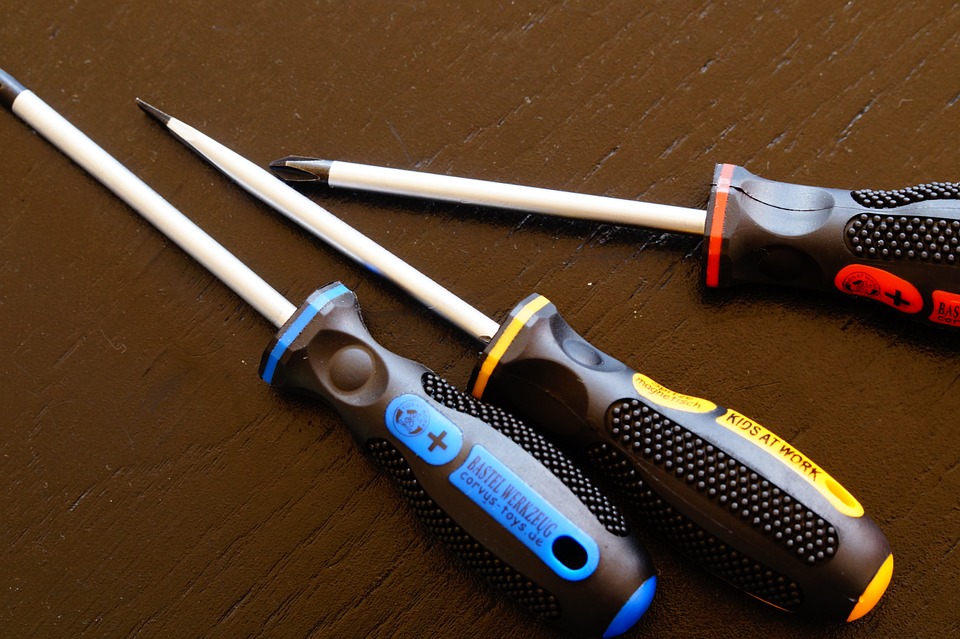
All HVAC systems include screws, and you’ll need to keep Flathead and Phillips head screwdrivers on you at all times. Your work will easily be halted if you don’t have these tools on you.
25. Hex-Head Nut Drivers
A hex-head nut driver only differs from a screwdriver because it has a hexagon-shaped head, and you’ll need it to remove nuts. Go ahead and get three hex-head sizes: 1/4, 3/8, and 5/16-inch. These three sizes will be used frequently.
26. Pipe Wrench
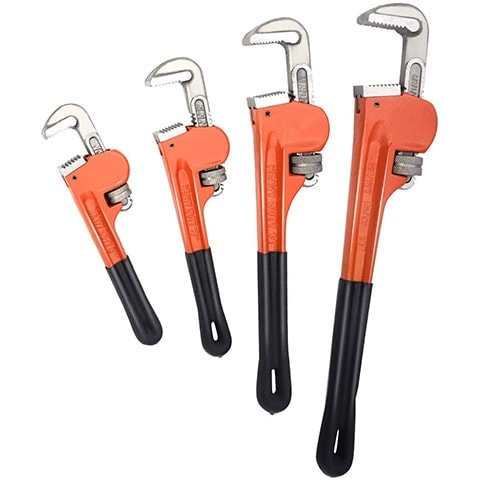
27. Caulk Gun

You can’t seal the ductwork properly without using caulk guns. Most designs are inexpensive and will also help you fill tiny holes, such as those in a house.
28. Flashlight or Headlamp
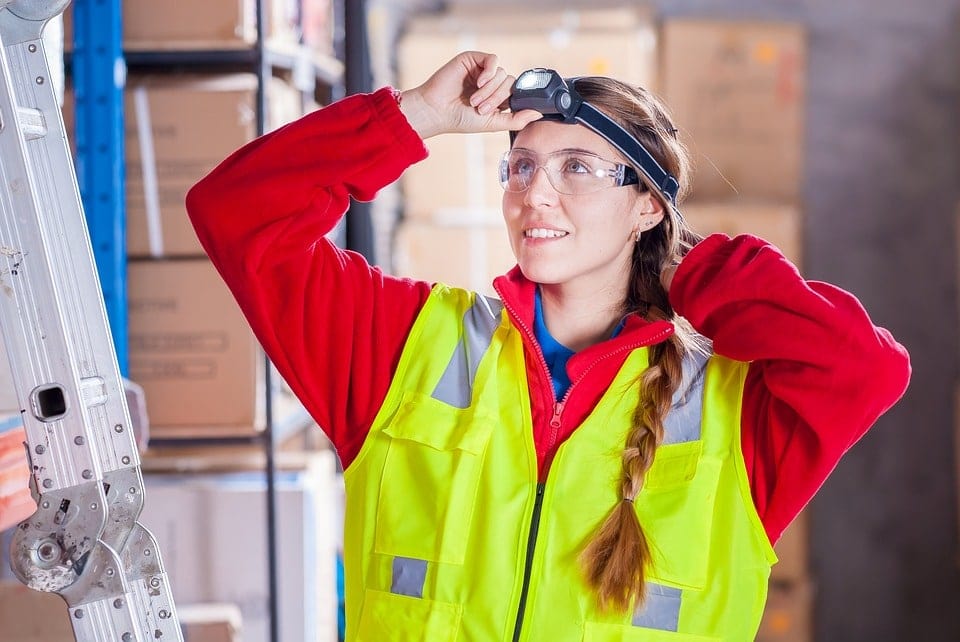
HVAC technicians always need a flashlight to see into any hole or unit easily. You should keep a flashlight and extra batteries in your kit, but you can also get a headlamp since it gives you hands-free light in dark spaces.
29. Step Ladder
Part of being an HVAC technician includes cleaning out vents or other hard-to-reach places. With a step ladder in your car or work van, you can do this easily and safely. When picking out step ladders, check out the maximum weight to ensure your ladder can support you.
Safety Tools
Whenever you are working, your safety should be your number one priority. You cannot repair HVAC units if you are injured. Make sure you have safety tools to protect yourself on the job.
30. Gloves
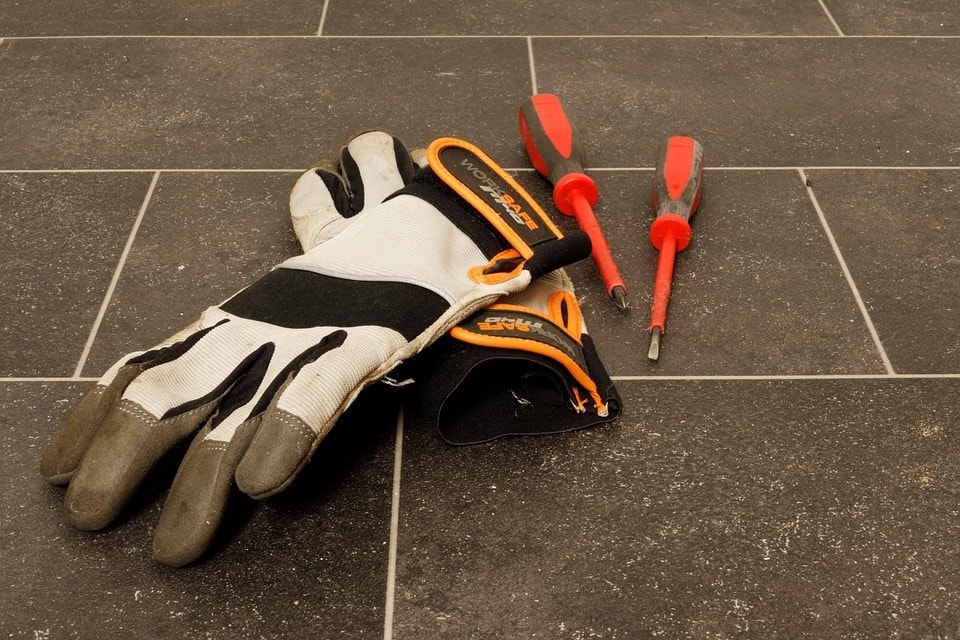
HVAC work is dangerous. With a pair of durable and flexible gloves, you’ll protect your hands without inhibiting your movement. Always wear gloves when dealing with sharp or pointy objects.
31. Goggles
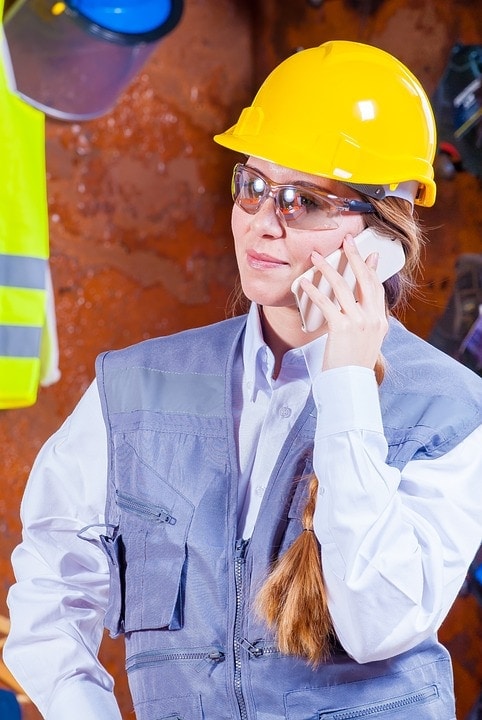
Protect your eyes from metal and dust debris by wearing safety goggles on the job. Some goggles even come with extra magnification that improves your accuracy and efficiency.
Conclusion
HVAC technicians perform several tasks on the job, which is why they need a large toolkit. Although the list may seem large, you probably have several tools already, such as a tape measure and hammer. You’ll be prepared for anything that may get thrown your way by having all the essential tools on hand. We hope this list has made it easier to determine which tools you’ll need as an HVAC technician.
Contents




